Keyuan Garden: A Must-Visit Destination for Garden Lovers and History Buffs
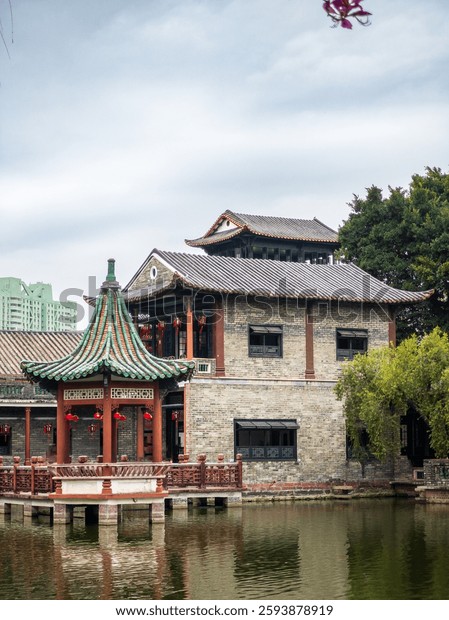
An Essential Guide to Visiting Keyuan_Garden
Nestled in the heart of Dongguan, Keyuan Garden (可园) offers a serene escape from the chaos of urban life, beckoning visitors with its enchanting blend of natural beauty and traditional Chinese aesthetics. Established in 1850 by the esteemed government commissioner Zhang Jing Xiu, this historical garden is an exquisite representation of classical Chinese landscape design, featuring meandering pathways, tranquil koi ponds, and lush greenery interspersed with unique rock formations.
As you wander through the garden, you’ll discover charming pavilions and quaint bridges that create a picturesque backdrop for moments of quiet reflection. Whether you’re looking to immerse yourself in nature, capture stunning photographs, or simply unwind amidst the peaceful ambiance, Keyuan Garden presents an idyllic retreat for travelers of all kinds. With its rich history and artistic influences, this garden is not just a destination; it’s an experience that invites you to slow down and appreciate the beauty of your surroundings.
Prepare to be captivated by the harmonious blend of nature and culture that makes Keyuan Garden a must-visit location during your travels in the region.
In This Guide
- An Essential Guide to Visiting Keyuan_Garden
- The Rich History and Legends of Keyuan_Garden
- Main Highlights: What You Absolutely Can’t Miss
- Planning Your Visit: A Practical Guide
- Tickets: Prices, Booking, and Tips
- How to Get There: A Complete Transportation Guide
- Local Cuisine and Accommodation Nearby
- Frequently Asked Questions
- Final Thoughts on Your Trip
The Rich History and Legends of Keyuan_Garden
Nestled in the heart of Dongguan, Keyuan Garden, or 可园, is a stunning testament to traditional Chinese landscape artistry and rich historical lineage. Established in 1850 by Zhang Jingxiu, a prominent government commissioner, the garden reflects the influences of the grand imperial gardens of Beijing that Zhang would have encountered during his tenure.
Zhang Jingxiu envisioned Keyuan as a serene retreat, a space harmoniously blending nature and architecture. Inspired by the principles of Chinese garden design, where every element is meticulously placed to create an atmosphere of tranquility, Keyuan features winding pathways, koi-filled ponds, and intricately designed pavilions. The garden is not merely a collection of plants and rocks; it embodies the philosophy of imitating nature through human effort. Visitors are greeted by unique rock formations, lush greenery, and flowing streams that evoke a sense of peace and reflect the natural landscape.
As a cultural hub, Keyuan Garden has attracted local artists and literati over the decades, becoming a canvas for Lingnan art—a vibrant style originating from the Guangdong region. The exhibition halls within the garden showcase various artworks, revealing the garden’s role as a magnet for creativity and inspiration. For those who wander its paths, the garden offers numerous quiet corners ideal for reflection, making it a favorite among poets and painters alike.
The garden’s rich history is punctuated with legends, one of which speaks of its enchanting koi fish. It is said that these fish possess wisdom beyond their years, and feeding them is considered an act of good fortune. This charming belief adds a layer of mystique to the experience of wandering through the garden, inviting visitors to engage with the space on a deeper level.
Keyuan’s architectural elements include charming bridges and pavilions that serve as perfect vantage points for appreciating the surrounding beauty. The central pavilion, perched atop a steep hill, offers breathtaking views of the garden and its stunning scenery, rewarding those who make the ascent.
In recent years, Keyuan Garden has undergone renovations, successfully blending modern amenities while preserving its historical essence. The result is a beautifully curated space that continues to enchant both international travelers and locals seeking refuge from the hustle and bustle of city life.
Visiting Keyuan Garden is not just about exploring a picturesque landscape; it is an immersive journey into the heart of Chinese culture and history. Each corner of the garden tells a story, inviting guests to connect with the past while enjoying a moment of tranquility in this timeless setting.
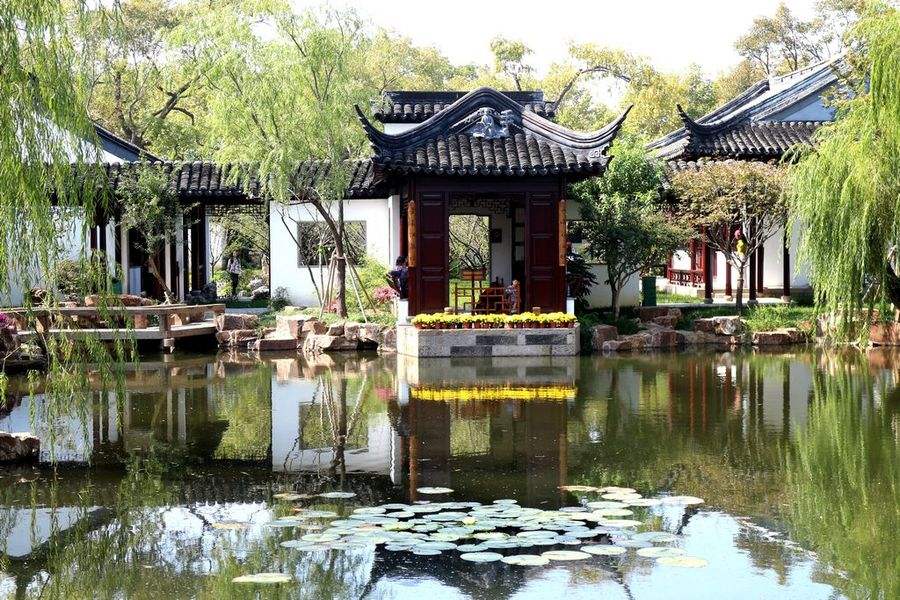
Keyuan_Garden.
Main Highlights: What You Absolutely Can’t Miss
Keyuan Garden, a serene oasis nestled in Dongguan, invites visitors to immerse themselves in the beauty of traditional Chinese landscape design. This garden, established in 1850 by the esteemed Zhang Jing Xiu, is a masterpiece of natural artistry, blending lush greenery, reflective water features, and intricate stone formations. Here’s a guide to the main highlights that you absolutely cannot miss during your visit.
Winding Paths and Tranquil Koi Ponds
As you meander through the garden, the carefully laid winding paths draw you into a world of tranquility. You’ll encounter several koi ponds, where vibrant fish glide gracefully through the water. Bring some fish food along, as feeding these friendly creatures can be a delightful experience! The peaceful sound of water combined with the lush surroundings creates an atmosphere perfect for relaxation and contemplation.
Charming Pavilions and Bridges
Scattered throughout the garden are beautifully designed pavilions and small bridges that offer perfect spots for resting and enjoying the scenery. Each pavilion is uniquely styled and often features traditional Chinese architecture, providing not only a place to sit but also a fantastic backdrop for photographs. Make sure to cross the delicate bridges that arch over serene ponds; they enhance the garden’s picturesque charm.
Unique Rock Formations
One of the standout features of Keyuan Garden is its captivating rock formations. These structures are not merely decorative; they are crafted to echo the natural landscapes found in China’s famous gardens. Take your time to explore these formations, as they often serve as focal points for various garden views, allowing you to appreciate the thoughtful design and artistic influence behind the garden’s layout.
The Central Pavilion Viewpoint
Ascend the steep stairs to the central pavilion for a panoramic view of the entire garden. The vista from above is breathtaking, offering a sweeping perspective of the garden’s harmonious design and the lush greenery that envelops it. Don’t forget to bring your camera—this is one of the most Instagram-worthy spots in the garden!
Lingnan Art Exhibits
For art enthusiasts, the garden houses several exhibits showcasing Lingnan art. These displays reflect the rich cultural heritage of the region and its artistic evolution. Even if you’re not particularly knowledgeable about art, take a moment to appreciate the unique pieces and the stories they tell about local history and traditions.
Peaceful Corners for Reflection
Keyuan Garden is designed to provide spaces for quiet reflection. Look for the hidden corners and secluded benches where you can sit and absorb the beauty around you. Whether you want to meditate, read a book, or simply enjoy the sounds of nature, these tranquil spots are scattered throughout the garden, inviting you to slow down and unwind.
Practical Tips for Your Visit
- Admission: Entrance to the garden is typically low-cost, and don’t forget to carry your passport, as it may grant you free access to certain areas.
- Accessibility: Keep in mind that the garden is not wheelchair accessible due to its many steps and uneven paths.
- Refreshments: There are limited refreshments available, so consider bringing your own water and snacks for your visit.
- Time: Aim for at least 90 minutes to fully explore and appreciate all the highlights without feeling rushed.
Whether you’re a nature lover, a photography enthusiast, or simply seeking a peaceful escape from the hustle and bustle of city life, Keyuan Garden is a must-visit destination that promises a memorable experience steeped in beauty and tranquility.

Keyuan_Garden.
Planning Your Visit: A Practical Guide
Visiting Keyuan Garden (可园) in Dongguan promises a delightful escape into a world of tranquility and natural beauty. To make the most of your experience, here’s a practical guide to planning your visit.
Getting There
Keyuan Garden is located approximately 50 kilometers east of Guangzhou. The easiest way to reach the garden is by public transport or taxi. If you are coming from Guangzhou, consider taking a bus or train to Dongguan and then a taxi to the garden. For those who prefer a more structured visit, guided tours often include transportation.
Admission
Entry to Keyuan Garden is reasonably priced, with a small admission fee of 8 Yuan. However, international travelers may be eligible for free entry by presenting their passports, so be sure to carry it with you.
Opening Hours
The garden is generally open from 8:30 AM to 5:30 PM. It’s advisable to arrive early to enjoy the serene atmosphere before larger crowds arrive. Plan to spend about 90 minutes to two hours exploring the various paths and exhibits.
What to Expect
Keyuan Garden, constructed in 1850, showcases traditional Chinese garden design influenced by the aesthetics of Beijing gardens. Expect to find winding pathways, koi ponds, rock formations, and lush greenery. The garden is not only a visual delight but also a tranquil space for reflection. As you explore, you’ll discover charming pavilions, small bridges, and quiet corners perfect for relaxation.
-
Exhibits: The garden features rooms exhibiting Lingnan art, showcasing the cultural heritage of the area. Don’t miss the opportunity to admire local artwork.
-
Accessibility: Note that the garden is not wheelchair-friendly due to its numerous steps and uneven paths, so plan accordingly if you have mobility concerns.
Facilities
While there are no food stalls within the garden, a gift shop offers snacks and refreshments. Clean restroom facilities are available on-site. However, it’s wise to bring your own water and snacks, especially if you plan to linger longer in the garden.
Tips for Your Visit
-
Dress Comfortably: Wear comfortable shoes for walking and dress appropriately for the weather, as you will be spending time outdoors.
-
Photography: Bring your camera or smartphone! The picturesque landscapes and unique features of the garden are perfect for photography.
-
Plan for the Weather: Check the weather forecast before your visit. The garden is best enjoyed on a clear day, but the lush greenery can be particularly enchanting after rain.
-
Quiet Reflection: Embrace the tranquility of the garden. Find a quiet spot to sit and take in the beauty around you—it’s the perfect place for a moment of peaceful reflection.
Nearby Attractions
After visiting Keyuan Garden, consider exploring nearby attractions such as SongShan Lake or local dining spots in Dongguan. The area offers a variety of experiences, including cultural landmarks and culinary delights.
Conclusion
Keyuan Garden is a peaceful oasis in the heart of Dongguan, perfect for nature lovers and anyone seeking a break from the bustling city life. With thoughtful planning, your visit can be both memorable and enriching, allowing you to immerse yourself in the beauty of traditional Chinese garden design. Enjoy your visit!
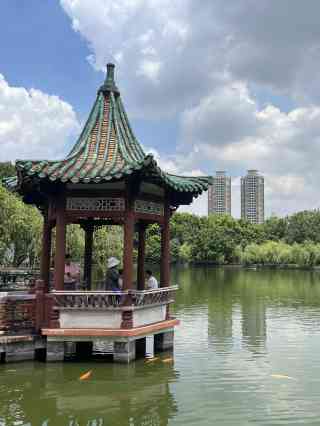
Keyuan_Garden.
Tickets: Prices, Booking, and Tips
When planning your visit to Keyuan Garden (可园) in Dongguan, understanding the ticketing process can enhance your experience and ease your travel logistics. Here’s what you need to know about prices, booking options, and some handy tips.
Admission Prices
The entrance fee for Keyuan Garden is quite reasonable. Typically, the standard admission is 8 Yuan (approximately $1.20 USD). However, good news for international travelers: many visitors report that showing your passport can grant you free entry, as many sites in China often waive fees for foreigners. Always carry your passport with you when exploring!
Booking Information
Tickets for Keyuan Garden can be purchased on-site at the entrance. There’s no need for advance booking, making it convenient for spontaneous visits. If you’re part of an organized tour, your guide will typically handle the ticketing for you.
Tips for a Great Visit
-
Timing: Allocate about 90 minutes to fully enjoy the garden. This should give you enough time to wander the picturesque paths, admire the koi ponds, and take in the beautifully designed pavilions.
-
Explore with Ease: Wear comfortable shoes, as the garden features numerous paths and some steep stairs. Be aware that it is not wheelchair accessible, so plan accordingly if you have mobility concerns.
-
Bring Snacks: While there are no food vendors inside the garden, a small gift shop offers drinks and snacks. Consider bringing your own refreshments to enjoy in one of the tranquil corners of the garden.
-
Photography: Capture the breathtaking scenery, but be respectful of other visitors and the serene environment.
-
Cultural Insights: Take a moment to appreciate the exhibits of Lingnan art scattered throughout the garden, which highlight local artistic traditions and history.
Whether you’re looking for a peaceful retreat or a spot to immerse yourself in nature, Keyuan Garden offers an enriching experience for travelers. Enjoy your visit!
How to Get There: A Complete Transportation Guide
Reaching Keyuan Garden (可园), a serene oasis located in Dongguan, China, can be an enriching part of your travel experience. Here’s a comprehensive guide to help you navigate your way to this beautiful traditional garden.
Getting to Keyuan Garden
By Air
If you’re flying into the region, the nearest major airport is Guangzhou Baiyun International Airport (CAN), located approximately 60 kilometers from Keyuan Garden. Once you land:
- Airport Transfer Options:
- Taxi: The most convenient option. Taxis are available outside the terminal. Expect a fare of around 200-250 RMB and a travel time of roughly 1.5 hours, depending on traffic.
- Airport Bus: Look for the airport shuttle service to Dongguan. Buses run frequently, and you can disembark at the Dongguan Bus Station. From there, you can take a taxi to Keyuan Garden.
By Train
Dongguan is well-connected via high-speed rail, making it easy to reach from major cities:
- From Guangzhou:
- Take a train from Guangzhou South Railway Station to Dongguan Railway Station. The journey takes about 30 minutes.
-
Upon arrival, you can take a local taxi or use ride-hailing apps to reach Keyuan Garden, which is approximately 15 kilometers away.
-
From Shenzhen:
- A train from Shenzhen North Railway Station to Dongguan Railway Station is also available and takes about 40 minutes.
- Similar to the Guangzhou route, a taxi or ride-hailing service will get you to the garden in around 30 minutes.
By Bus
If you prefer road travel, intercity buses connect various cities to Dongguan:
- From Guangzhou:
- Buses operate from multiple stations in Guangzhou. The journey typically takes about 1-1.5 hours.
-
Upon reaching Dongguan Bus Station, take a taxi to Keyuan Garden.
-
From Shenzhen:
- Buses run frequently between Shenzhen and Dongguan. The trip usually lasts around 1.5 hours.
- Again, a taxi will be your best option to cover the final stretch to the garden.
Local Transportation
Once in Dongguan, navigating to Keyuan Garden is straightforward:
-
Taxis and Ride-Hailing Services: Taxis are readily available, and ride-hailing apps like Didi are popular for their convenience. The fare from the Dongguan Railway Station or Dongguan Bus Station should be around 30-50 RMB.
-
Public Buses: While public transportation is available, it may be less convenient for travelers unfamiliar with the local routes. If you’re keen to explore, inquire at your accommodation for the best local bus routes.
Travel Tips
- Language Barrier: Having a translation app or a phrasebook can be helpful, as English may not be widely spoken.
- Carry Your Passport: Presenting your passport can sometimes grant you free or discounted admission to various attractions.
- Plan for the Weather: Dongguan can be humid; wearing comfortable clothing and carrying an umbrella or water is advisable.
With this guide, you’re well on your way to enjoying the tranquility of Keyuan Garden. Whether you arrive by air, train, or bus, the journey will only enhance your appreciation of this peaceful retreat. Safe travels!
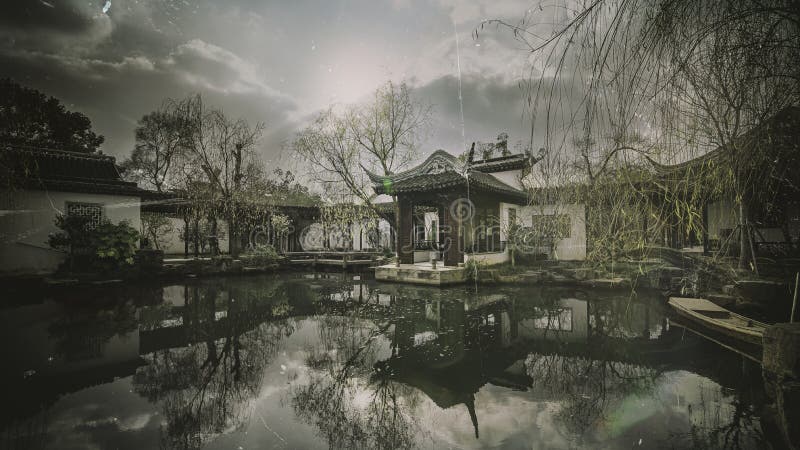
Keyuan_Garden.
Local Cuisine and Accommodation Nearby
Exploring Keyuan Garden (可园) in Dongguan is a delightful experience, and after soaking in the tranquil beauty of the garden, you’ll want to indulge in some local cuisine and find a comfortable place to stay. Here’s a guide to help you enhance your visit.
Local Cuisine
1. Dongguan Cuisine
Dongguan is known for its rich culinary heritage, particularly its delicious Cantonese dishes. After your stroll through Keyuan Garden, consider trying some local favorites:
-
Dim Sum at Dapeng Restaurant: Just a short drive from the garden, this restaurant is renowned for its authentic dim sum. Enjoy a variety of steamed buns, dumplings, and other bite-sized treats in a cozy setting.
-
Guangdong Roast Duck: Head over to Yum Cha to savor some mouthwatering roast duck, perfectly complemented by a side of jasmine tea. The crispy skin and tender meat are a must-try!
-
Stir-fried Rice Noodles at Noodle House: For a casual meal, this local eatery serves up delicious stir-fried rice noodles with your choice of meat and vegetables, making it a quick and satisfying option.
2. Street Food Delights
For a more adventurous culinary experience, don’t miss the street food stalls nearby. Sample:
-
Chaozhou Beef Balls: These juicy beef balls are a local specialty, often served with a spicy dipping sauce.
-
Bing (Chinese Pancakes): Found in various vendors around the area, these savory pancakes are filled with ingredients like scallions, eggs, and meats, providing a delightful snack on the go.
Accommodation Nearby
After enjoying the local cuisine, here are some accommodations that offer comfort and convenience for your stay:
1. Dongguan Hillview Golf Club
For a touch of luxury, consider staying at the Dongguan Hillview Golf Club. This hotel not only provides elegant rooms but also features golf courses, a spa, and dining options on-site. It’s a perfect choice for those looking to unwind after a day of exploration.
2. Sheraton Dongguan Hotel
Located a bit further but worth the travel, the Sheraton Dongguan Hotel offers modern amenities, spacious rooms, and a lovely outdoor pool. Its restaurant serves a delightful mix of local and international cuisine, providing a perfect end to your day.
3. Home Inn Dongguan
If you prefer a budget-friendly option, Home Inn offers clean, comfortable rooms at reasonable prices. It’s conveniently located near public transport, making it easy to explore both Keyuan Garden and the surrounding attractions.
Whether you’re indulging in local delicacies or resting after a day of exploration, Dongguan offers a variety of choices that cater to every traveler’s needs. Enjoy your visit!
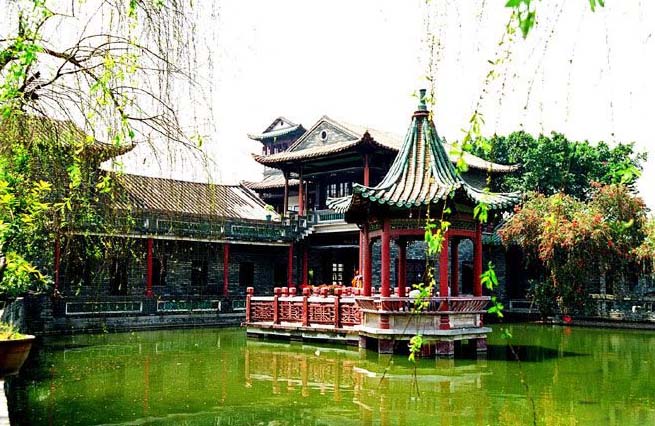
Keyuan_Garden.
Frequently Asked Questions
Frequently Asked Questions about Keyuan Garden
-
What are the opening hours of Keyuan Garden?
Keyuan Garden is generally open from 8:00 AM to 6:00 PM. However, it’s always a good idea to check the official website or call ahead, as hours may vary on public holidays or due to special events. -
Is there an admission fee?
Yes, there is a small admission fee of around 8 Yuan. However, foreign visitors often have free entry by showing their passports, so it’s advisable to carry yours with you. -
How long should I plan to spend at the garden?
A visit typically takes about 90 minutes to two hours, which is enough time to explore the winding paths, enjoy the koi ponds, and appreciate the unique rock formations and pavilions at your leisure. -
Is Keyuan Garden wheelchair accessible?
Unfortunately, Keyuan Garden is not wheelchair friendly. The garden features numerous steps and uneven pathways, which may pose challenges for those with mobility issues. -
Are there any facilities available for visitors?
While there are clean restroom facilities on site, there are no food or beverage services directly available in the garden. However, a small gift shop offers snacks and refreshments for purchase. -
Can I take photographs in the garden?
Yes, photography is allowed throughout Keyuan Garden. Be sure to capture the serene landscapes, charming pavilions, and vibrant koi ponds! -
What should I wear when visiting Keyuan Garden?
Comfortable walking shoes are recommended, as you will be exploring various pathways and steps. Additionally, consider wearing a hat and sunscreen if you’re visiting on a sunny day. -
Are there any nearby attractions to visit after Keyuan Garden?
Yes! After your visit, you might want to explore nearby attractions such as SongShan Lake or local dining options in Dongguan. Many visitors enjoy combining their trip to Keyuan Garden with other nearby experiences for a full day of exploration.
Final Thoughts on Your Trip
As your journey through Keyuan Garden comes to a close, take a moment to reflect on the serene beauty that surrounds you. This enchanting sanctuary, steeped in history and adorned with nature’s artistry, offers not just a visual feast but also a tranquil escape from the frenetic pace of modern life. Whether you wandered through its winding paths, fed the koi in the shimmering ponds, or simply sat in quiet contemplation beneath the leafy canopies, each experience has woven a thread into the rich tapestry of your travels.
Keyuan Garden is more than just a destination; it is a reminder of the delicate balance between nature and human creativity. The garden’s thoughtful design, inspired by traditional Chinese aesthetics, invites you to reconnect with the natural world and perhaps find a moment of peace within yourself.
As you leave, carry with you the essence of this tranquil haven—a sense of calm, a renewed appreciation for the simple beauty of nature, and the warmth of the memories created within its borders. Whether you are heading back into the bustling city or onto your next adventure, let the spirit of Keyuan Garden accompany you, inspiring you to seek out moments of tranquility wherever your travels may take you. Safe travels!